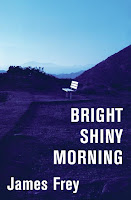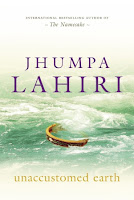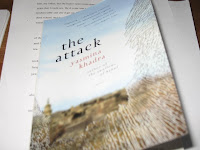 Donna Tartt’s epic The Secret History feels at times over-wrought, over-written and perhaps many, many pages too long. That said, holy crap did this novel grab me by the toes and pull me in from beginning to end. To summarize: it’s the story of a young, unhappy man from Plano, California who finds himself embroiled in a murderous plot at an exclusive college (called Hampden) in Vermont. But the book is also so much more than that — it’s the dramatic coming of age for a young man who searches for something exciting and finds himself deeply embroiled in events that will change his life forever.
Donna Tartt’s epic The Secret History feels at times over-wrought, over-written and perhaps many, many pages too long. That said, holy crap did this novel grab me by the toes and pull me in from beginning to end. To summarize: it’s the story of a young, unhappy man from Plano, California who finds himself embroiled in a murderous plot at an exclusive college (called Hampden) in Vermont. But the book is also so much more than that — it’s the dramatic coming of age for a young man who searches for something exciting and finds himself deeply embroiled in events that will change his life forever.
The narrator, Richard Papen, has had an ugly childhood: his parents are typically unhappy, he’s poor, an only child, and longs for a world far different from the one he grew up within. Enter Hampden College. And even better, enter his acceptance into a small fraternity of students, six including Richard, that study Greek under an epic teacher named Julian Morrow.
The group’s leader, Henry, a wickedly smart (he speaks six languages or something crazy like that), embarrassingly rich fellow who controls the group. Besides Richard and Henry, there’s Charles and Camilla (twins), Francis, and Bunny (real name Edmund). All five were reared at prep or private school, and all five both accept and reject Richard at the same time. The secret history of the novel’s title revolves around the events that fall out of a weekend where the core five, Richard excluded, attempt to create a true bacchanal in the woods around Francis’s property. It’s impossible for any of them to move forward beyond the events that happened over those few days and the book meditates on those moments in your life that impact where you’ll end up, the idea of a ruinous youth, and the consequences to thoughtless actions.
Tartt unravels the novel like a mystery with masterful suspense. Richard slowly goes through the motions of telling the story, which has become ‘the only one he’ll ever be able to tell,’ to the reader and in part finally letting the history consume him once again if only to finally let it all go. Elements of Highsmith and other solid British writers (Tartt’s an American) sneak into her prose and characterization (Henry is a solid Ripley-esque fellow, right down to his glasses), and I found the most frustrating part of the narrative never knowing exactly when the novel is set. But in the end, it’s a terrific book that sucks you right in and would be perfect for summer reading up at the cottage when it’s cold (like today) and raining (like today) and all you’re looking to do is curl up by the fire with a good, hair-raising story.
READING CHALLENGES: Believe it or not, The Secret History is on the 1001 Books list, and so it was on my particular challenge list for this year. I think I might be slightly behind the whole 1001 Books challenge for now, having given up Huck for the present time.
WHAT’S UP NEXT: Saints of Big Harbour, a nonfiction book that I started while waiting for the osteopath this afternoon called High Crimes, and whatever I’m going to take to Paris (probably the two IMPAC books I actually have and anything else that’ll fit in my suitcase and, of course, a Jane Austen because I always love to read her on a plane).







